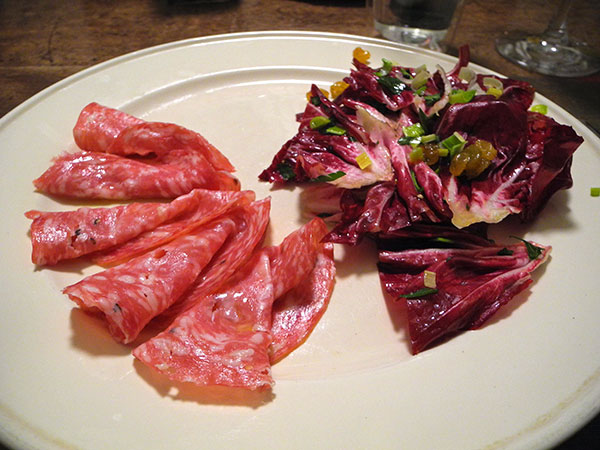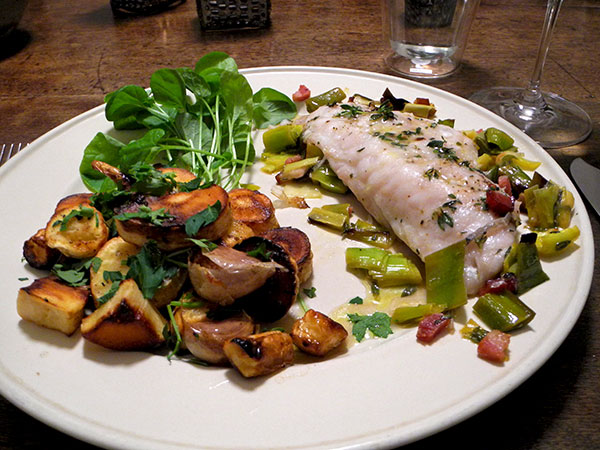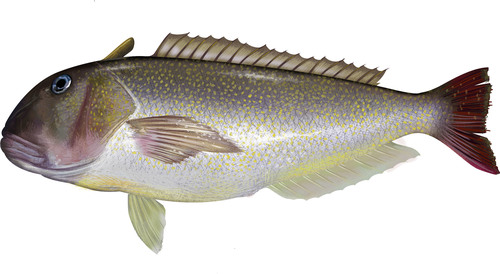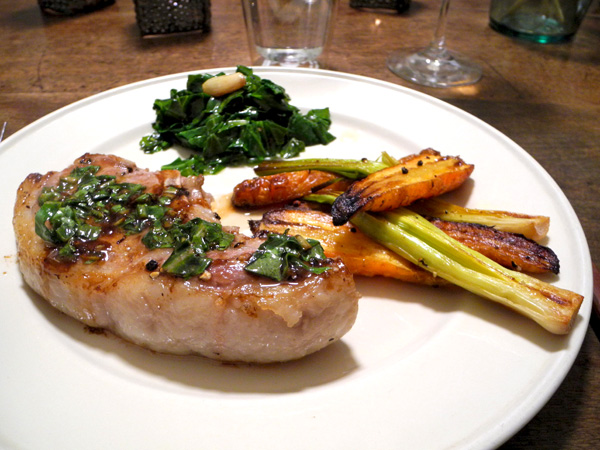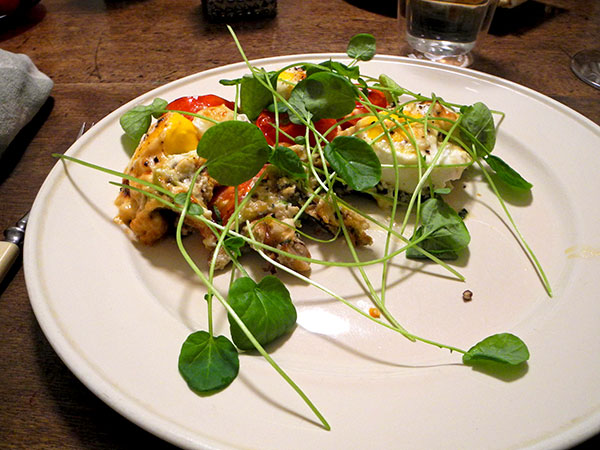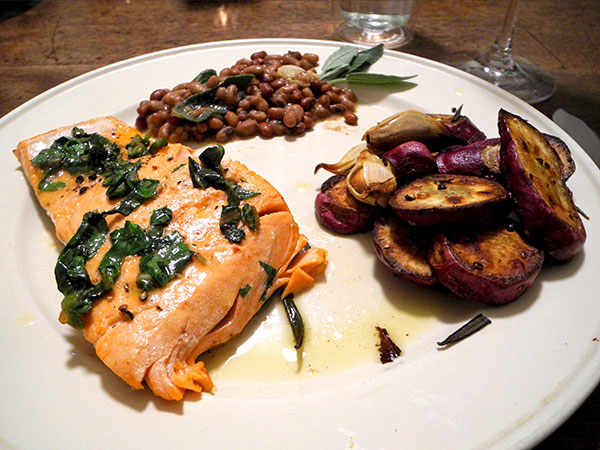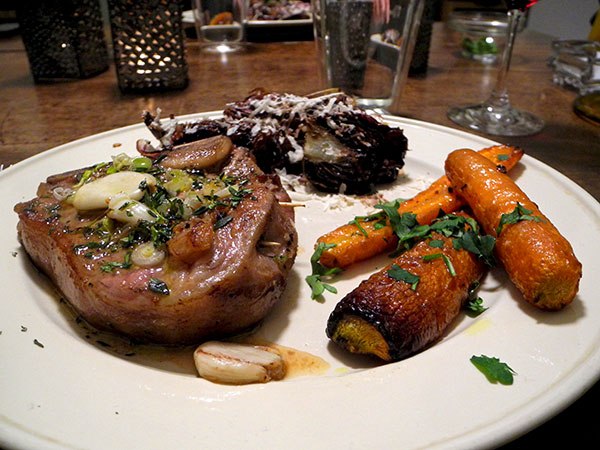
This dinner had the ingredients, aromas and feel of a hearty stew on a wintry night, although no pot had left the kitchen cupboard.
- two small veal loin chops from Consider Bardwell Farm, rubbed with olive oil, salt, and pepper, brought fully to room temperature, seared, rubbed with crushed garlic from Lucky Dog Organic, roasted in a 375º oven for seven or eight minutes, flipping once, removed and allowed to rest on warm plates for five minutes while being drizzled with the pan juices, lemon, and olive oil, and scattered with finely-sliced baby leeks from Rogowski Farm and chopped thyme leaves from Manhattan Fruit Exchange
- red and orange carrots from Monkshood Nursery and Gardens, rolled in olive oil, salt, and pepper, roasted at 400º for about half an hour, removed from the oven and sprinkled with chopped parsley from Eataly
- radicchio from S.&S.O. Produce Farms, quartered lengthwise, placed in an unglazed ceramic oven pan, drizzled with olive oil and seasoned with salt and pepper, roasted at 400º for about 15 minutes, turning once, finished with a drizzle of balsamic vinegar, scattered with shavings of Parmesan cheese from Buon Italia
- the wine was an Italian red, Colpasso Nero d’Avola Terre Siciliane 2012
